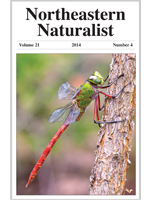Extensive vegetation growth has decreased potential basking sites for an endangered population of Sistrurus catenatus (Eastern Massasauga Rattlesnake [EMR]), and habitat management is needed to restore these sites. Practices that decrease canopy cover can unintentionally impact snakes by increasing exposure, thereby raising predation rates. Basking behavior of slow-moving EMRs often involves remaining cryptic or retreating to avoid detection. We observed several aspects of EMR basking behavior—location, exposure, and defensiveness—relative to distance from habitat edge within 100-m2 square plots of cut shrubs to determine whether the habitat alterations modified EMRs use of the landscape as it related to predator avoidance. EMRs basked throughout the entirety of plots and did not vary their level of exposure or defensiveness based on their distance from the edge of plots. Our results suggest that shrub-cutting in up to 10 m × 10 m areas does not alter predator-avoidance behavior in EMRs.
How to translate text using browser tools
1 March 2015
Edge Effects on Eastern Massasauga Rattlesnakes Basking in Managed Habitat
Alexander Robillard,
Brent Johnson
ACCESS THE FULL ARTICLE

Northeastern Naturalist
Vol. 22 • No. 1
March 2015
Vol. 22 • No. 1
March 2015




